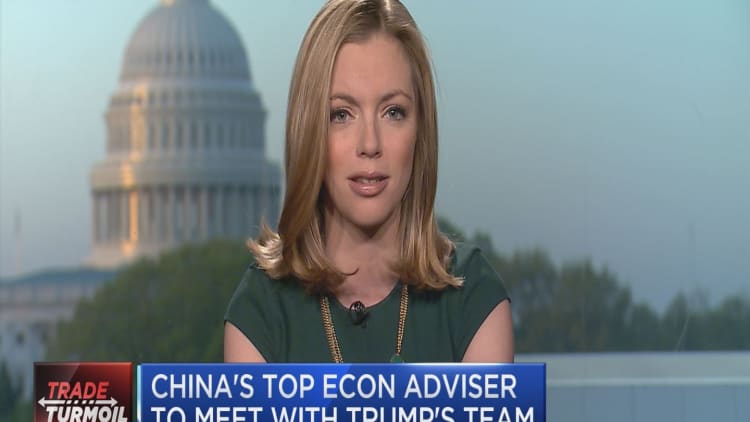Asia's emerging economies have a lot at stake if President Donald Trump delivers on his threat to slap tariffs on up to $150 billion worth of Chinese goods.
That was a major concern expressed by experts at the Asian Development Bank's annual gathering in Manila Thursday. Later that day, a U.S. delegation heads to Beijing in what will be the first formal negotiation session since the world's two largest economies announced plans for tit-for-tat tariffs.
Southeast Asian nations are seen as vulnerable to Trump's tariffs because they are a significant contributor to Chinese exports that are headed stateside.
"Across Asia, there is a deep regional value chain … So, trade tensions between the U.S. and China will have a spill over effect through this value chain," Cyn-Young Park, director for regional cooperation and integration at the Asian Development Bank's economic research and regional cooperation department told CNBC.
In a nutshell, this production network involves Southeast Asian countries providing intermediate, i.e. semi-finished goods and raw materials to China, which it then assembles into a final product to be exported to the West.

Intermediate goods account for more than 50 percent of both Southeast Asian exports and imports with China, according to a 2017 report by the Korea Institute for International Economic Policy.
Even as Beijing increasingly produces its own intermediate goods instead of relying on imports, the world's second-largest economy is simultaneously investing heavily in Southeast Asia, resulting in "a strong trade-investment nexus" across the region, Park continued.
As a result, if Chinese growth slows down by 1 percentage point under the weight of U.S. tariffs, that could shave growth in the rest of Asia by 0.3 percentage points, she warned.
That's particularly bad news for the Philippines, one of the region's fastest-growing economies.
A sizeable chunk of Philippine exports — as much as 16.9 percent, according to Malaysian bank RHB — are a part of China's value chain. For example, the Southeast Asian country exports electronic components to Beijing, with Chinese firms then using those parts in its own electronic shipments to the U.S.
"There will certainly be some collateral damage to us," said Diwa Guinigundo, deputy governor for monetary stability at the Philippines central bank. Aside from growth, "there could also be financial spillovers," he warned.
"FDI (foreign direct investment) and portfolio investments could also be affected in the process because you don't limit protectionist policies to just trade, they may also extend to include direct investment."

Thus, export-oriented Asian economies could emerge as the biggest losers if U.S.-China tensions evolve into a full-scale trade war.
Meanwhile, countries reliant on domestic demand to fuel growth are best positioned to weather current frictions, such as Vietnam, Indonesia and India, said DBS economist Taimur Baig. But open economies such as South Korea, Taiwan, Hong Kong and Singapore could suffer, he added.
Going forward, boosting intra-regional trade could be Southeast Asia's best safeguard if the situation between Washington and Beijing escalates.
"The way to manage this, for us at least in the region, is to continue strengthening our regional integration," said Guinigundo: "If we can strengthen our regional integration and address other remaining outstanding issues like non-tariff barriers, that could really be a counterweight to whatever we can expect from any escalation in a trade war."

